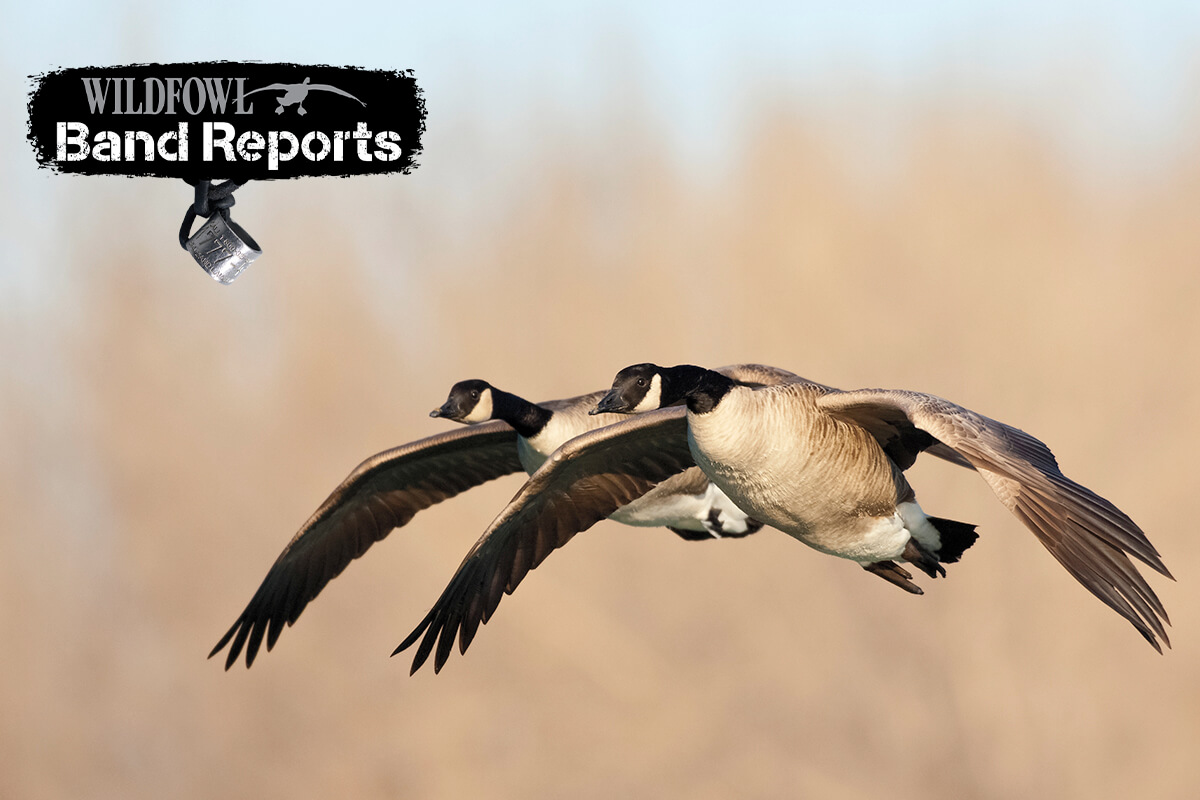
The hunters were surprised when they noticed an unusual black band. (Photo By: David Stimac)
The Hunt
Bands or jewelry as they’re sometimes referred to in waterfowling circles, are a much sought-after prize, so much so that some waterfowlers deliberately seek them out, looking for a glimpse of silver as birds hover over the decoys. Lots of resident Canada geese get banded but most recoveries are too close to the banding location to make our Living Skies section. Every so often, however, we get a submission that’s worthy of a Band Tale. This is one such instance.
Though a chilly 18 degrees, Jan. 29 was nonetheless a “bluebird day,” according to veterinarian Jason Robinson. He, along with his son, Jack, as well as his friend—Tom Loeb and his son, Spencer, were hunting the northeast section of the Loeb’s Arkansas farm. Set up in a small slough in a clearing dotted with cypress and overgrown buckbrush, the primary objective was ducks and the hunting party had already collected a half dozen when they were surprised by a pair of Canadas that obligingly flew into range and fell to their guns.
The hunters were pleasantly surprised to discover both birds were banded, but somewhat confounded when they noticed one sported an unusual black band the likes of which no one had ever seen before. After a little investigation, Jason eventually tracked down the banding program and the story behind the black band.
According to Rod Brook, an Ontario Wildlife Research Specialist, the flat black Cerakoted leg band is part of a Mississippi Flyway study of Canada geese harvest involving most U.S. states and Canadian provinces in the flyway. “The objective of the study,” according to Brook, “is to determine if hunters preferentially select and harvest geese that are wearing shiny aluminum bands, which may be visible to hunters during normal hunting practices.”
As part of the study in 2021, participants banded adult Canada geese, some with black colored bands and some with conventional un-coated aluminum bands. The study’s hypothesis is that the coated bands, which closely match a Canada goose’s leg color are not visible to hunters, and birds wearing them should show a lower recovery ratio if hunters are indeed selecting for banded birds. This, in turn, could represent a bias in the demographic rates calculated from recoveries of un-coated bands. Results are still pending as the study is slated to continue for several more years. Meanwhile, both banded geese will grace the walls of the Loeb farmhouse to remind the group of their memorable hunt.

The Bands
BAND#: 1258-37992 (black)
HUNTER: Thomas Loeb
SPECIES: Large Canada Goose (F)
BANDED: 6/25/2021
Near West Memphis, AR
RECOVERED:
1/29/2022
2 mi SE of Round Pond, AR
BAND#: 1298-00216
HUNTER: Jason Robinson
SPECIES: Large Canada Goose (M)
BANDED: 6/25/2021
Near West Memphis, AR
RECOVERED:
1/29/2022
10 mi SE of Widener, AR
If you have a particularly interesting story or band recovery tale, CLICK HERE to fill us in on the whole story and we might use it as one of our next Band Tales.









